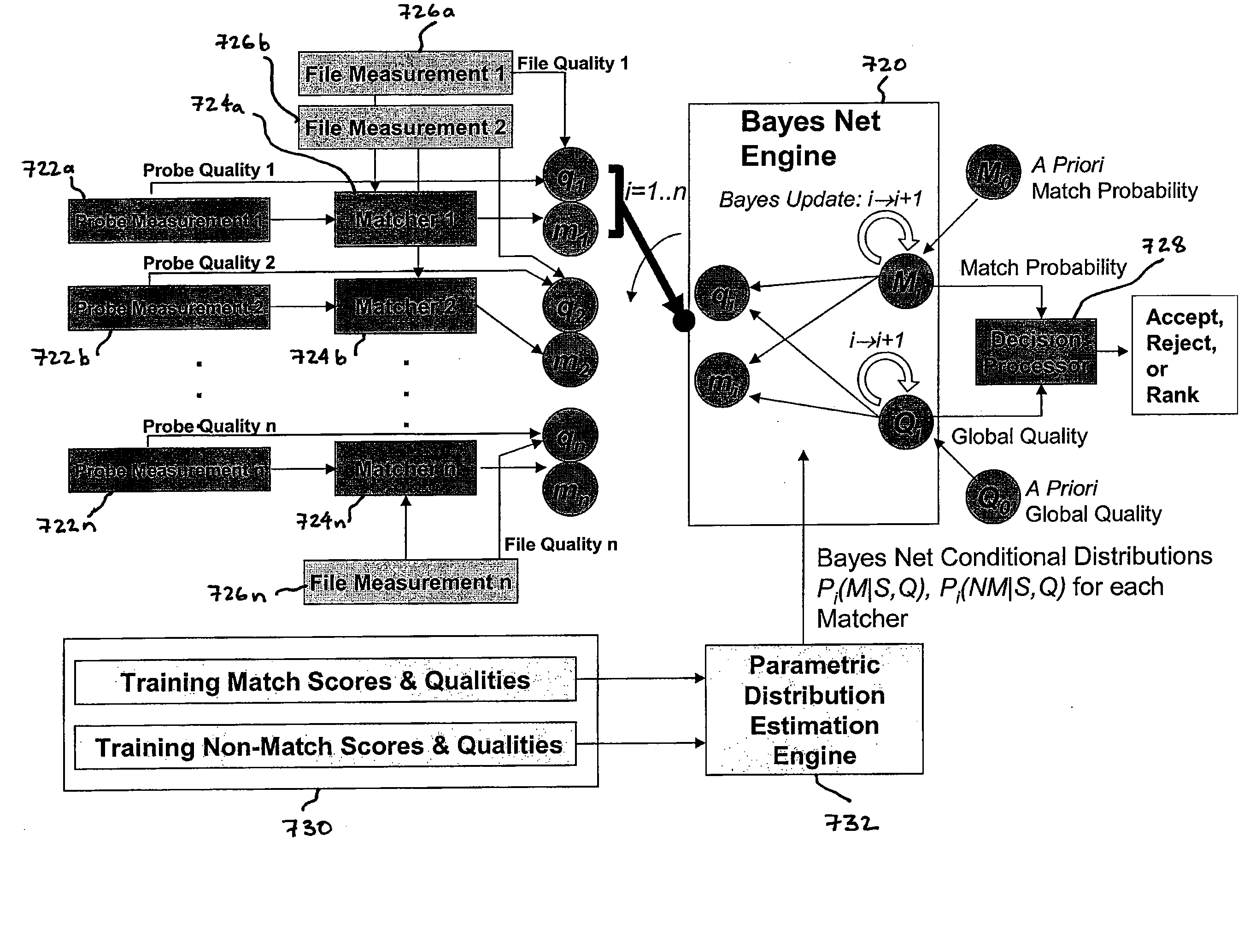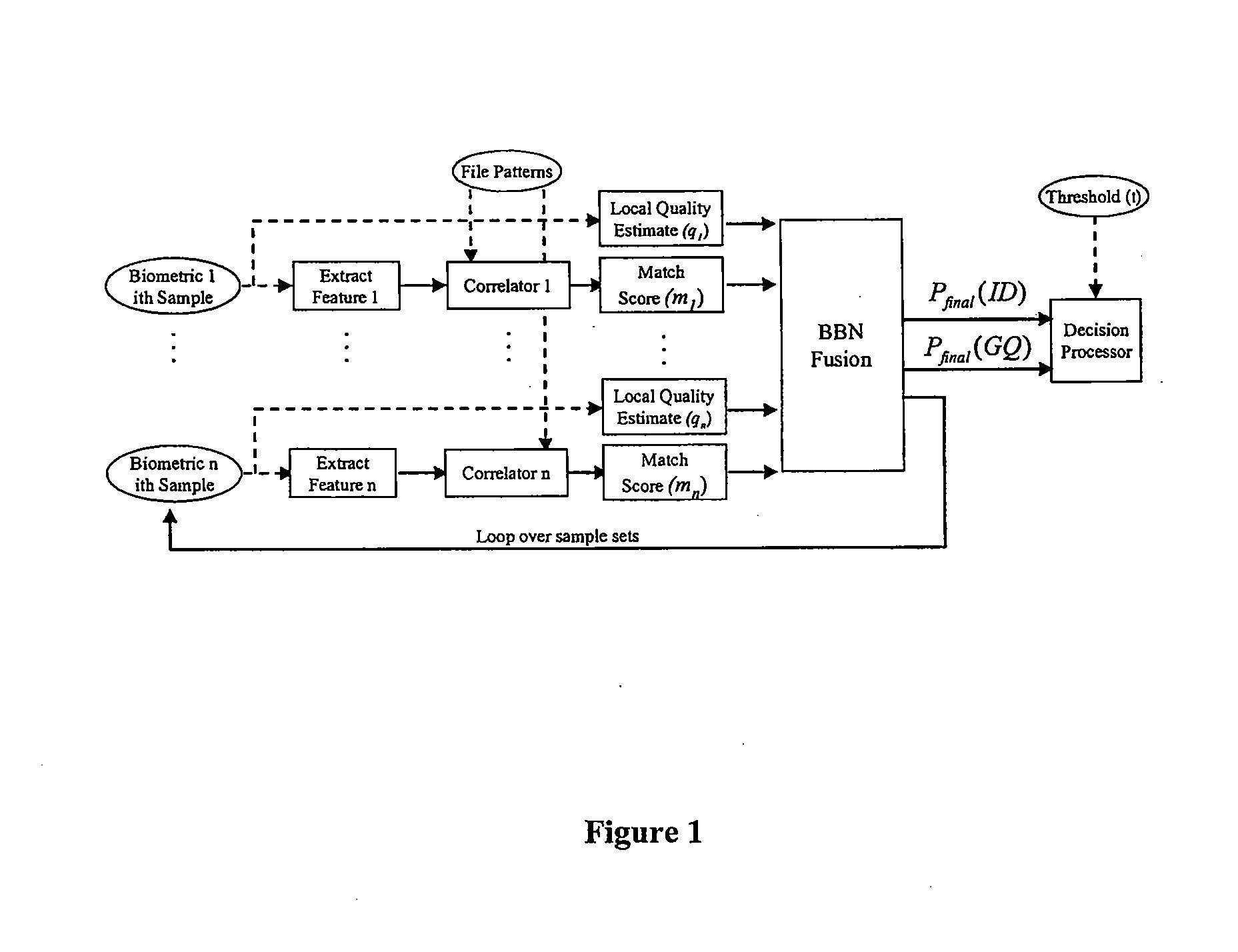Fusing Multimodal Biometrics with Quality Estimates via a Bayesian Belief Network
a multi-modal biometric and quality estimation technology, applied in the field of biometrics, can solve the problems of large-scale operation, thousands of erroneous matches, and obvious difficulties, and achieve the effects of improving matching performance, lowering error rates, and lowering errors
- Summary
- Abstract
- Description
- Claims
- Application Information
AI Technical Summary
Benefits of technology
Problems solved by technology
Method used
Image
Examples
Embodiment Construction
[0024] The present invention comprises a BBN-based architecture for biometric fusion applications. Bayesian networks provide a unified probabilistic framework for information fusion. As used herein, the term “Bayesian Belief Network” and “Bayes Net” are used interchangeably and describe a probabilistic formulation used for fusing information from multiple measurements. A “biometric fusion engine” as used herein describes a processor or hardware-based mechanism for fusing biometric information from multiple measurements. Although Bayesian methods have been used in biometrics (Bigun et al., supra; J. Richiardi, P. Prodanov, and A. Drygajlo, A Probabilistic Measure of Modality Reliability in Speaker Verification, in Proc. IEEE International Conference on ; A. B. J. Teoh, S. A. Samad, and A. Hussain, A Face and Speech Biometric Verification System Using a Simple Bayesian Structure, Journal of Information Science and Engineering, 21 (2005) 1121-1137), their capabilities have not been ful...
PUM
 Login to View More
Login to View More Abstract
Description
Claims
Application Information
 Login to View More
Login to View More - R&D
- Intellectual Property
- Life Sciences
- Materials
- Tech Scout
- Unparalleled Data Quality
- Higher Quality Content
- 60% Fewer Hallucinations
Browse by: Latest US Patents, China's latest patents, Technical Efficacy Thesaurus, Application Domain, Technology Topic, Popular Technical Reports.
© 2025 PatSnap. All rights reserved.Legal|Privacy policy|Modern Slavery Act Transparency Statement|Sitemap|About US| Contact US: help@patsnap.com



